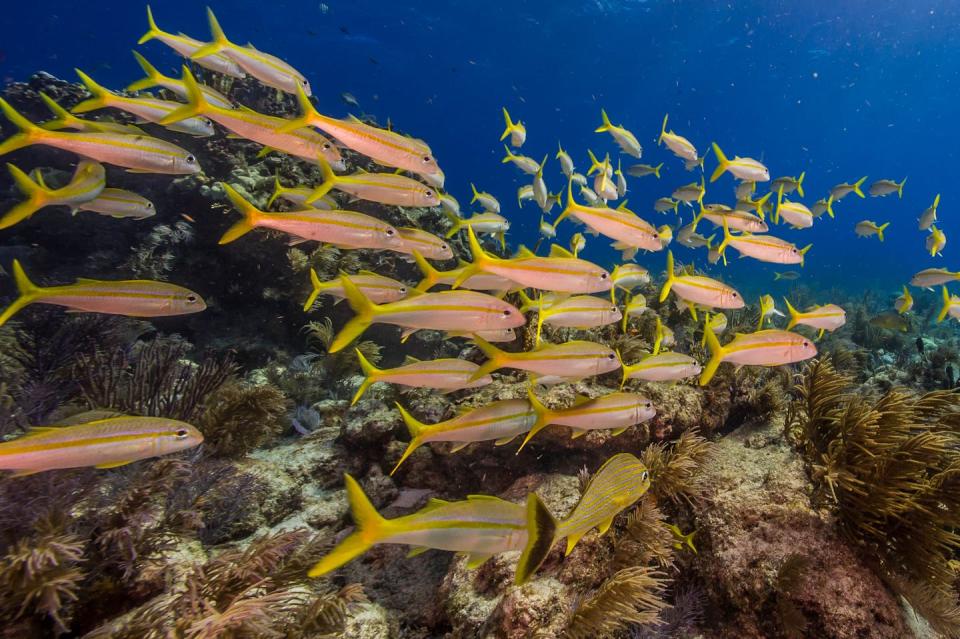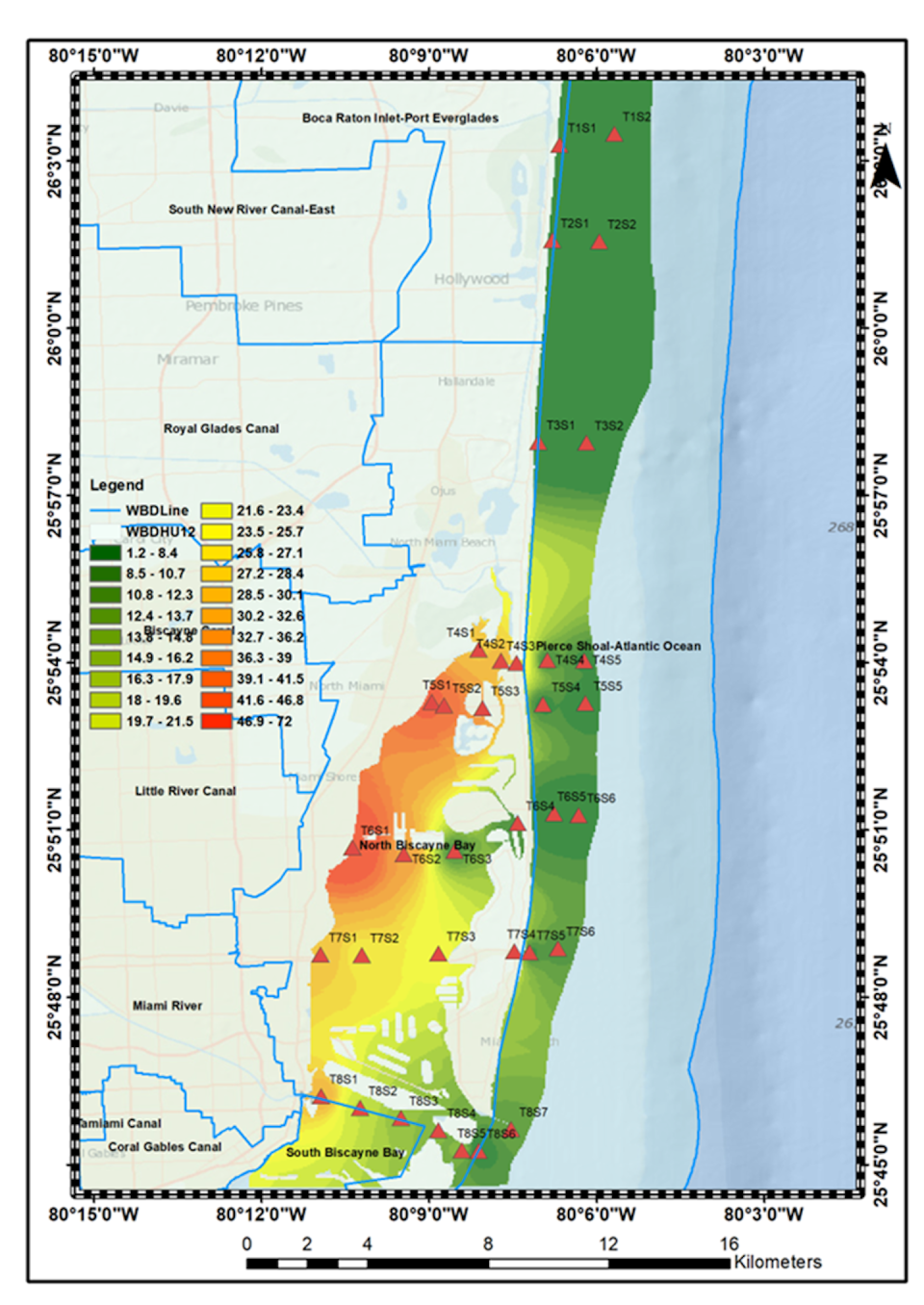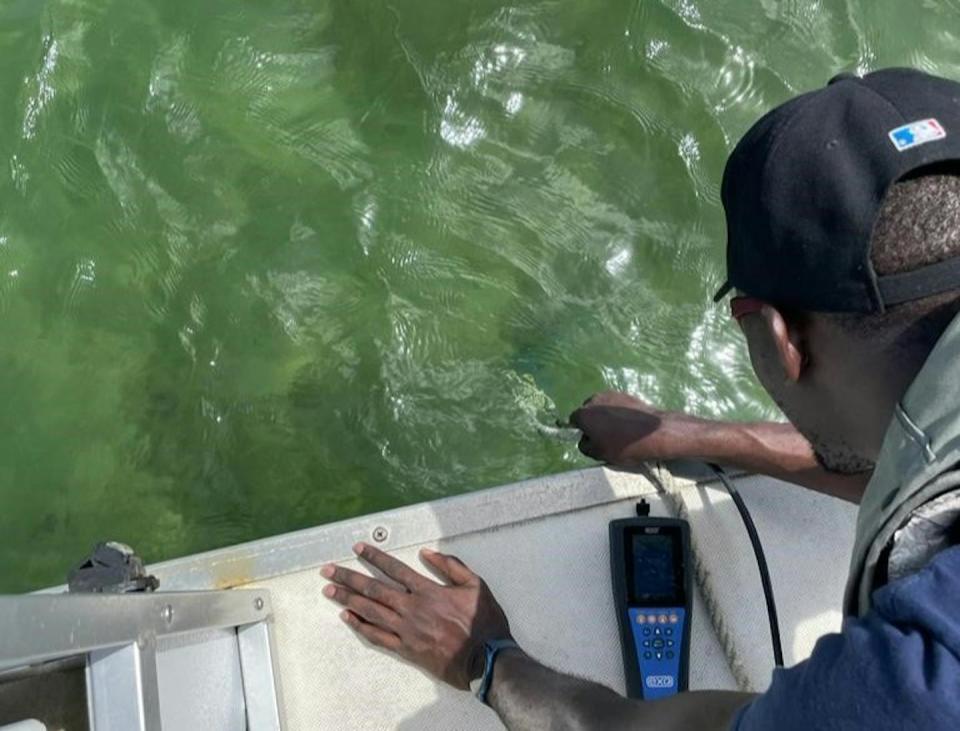[ad_1]
PFAS, the “forever chemicals” raising health concerns across the country, aren't just a problem in drinking water. These chemicals also leak from… Drainage systems failure And Landfills And wash Airport runways And Farm fieldsThey can end up in streams that eventually flow into ocean ecosystems where fish, dolphins, manatees, sharks and other marine species live.
We examine the risks posed by these persistent pollutants in coastal environments Environmental Analytical chemists At the Environmental Institute at Florida International University.
Because PFAS can Enter the food chain They accumulate in marine plants and animals, including fish that humans eat, and these chemicals have spread environmental And human health Ramifications.


In a new study, we Trace the origins of PFAS contamination In Miami Biscayne Bay To help identify ways to reduce harm.
What are PFAS?
PFAS – perfluoroalkyl and polyfluoroalkyl substances – are a group of man-made pollutants that have been Used for over 50 years. They are found in personal care products, such as cosmetics and shampoo, and in waterproof coatings used in nonstick cookware and food packaging. It is also used in adhesives and water-based firefighting foams, among other products.
As these PFAS-containing products have been washed down drains and dumped into landfills over the years, PFAS chemicals have become more widespread in the environment. Eventually, these chemicals found their way into aquatic ecosystems, including surface water, groundwater, and coastal environments.
The same stability and resistance to degradation that makes these chemicals valuable for water and stain-resistant products also makes them nearly impossible to destroy. Hence the nickname “Forever Chemicals”. They persist in the environment for decades to centuries.
This is a problem, because PFAS have been linked to them Immune disordersEndocrine, developmental, reproductive and neurological disorders and increased risk of bladder infection, Liver, college And Testicular cancer. A drinking water study conducted by the US Geological Survey estimated that these chemicals were present At least 45% tap water Throughout the United States, it is now believed that a large percentage of Americans have this problem PFAS can be detected in their blood. The Environmental Protection Agency has finalized its first federal law Drinking water standards for PFAS On April 10, 2024.
Studies have also found PFAS in a wide range of… Marine wildlifeincluding in the liver of otters and in the eggs of gulls, as well In freshwater fish Throughout the United States, these chemicals have already been shown to affect… Immune system and liver functions in fish And Marine mammals.
How PFAS enter the marine environment
When we started tracking the sources of PFAS in Biscayne Bay, we found hot spots for these chemicals around the outlets of urban canals — especially the Miami River, Little River, and Biscayne Canal. We found that each of these channels is a… Main point source Contributing to the presence of PFAS in marine areas of the Atlantic Ocean.
One of the main sources of PFAS is sewage pollution from failing sewer systems and sewage leaks in urban areas. This is demonstrated by the presence of PFAS types – such as PFOS, PFOA, PFPeA, PFHxS, PFHxA, PFBA, and PFBS – that used as Stain and grease repellents, carpets, food packaging materials and household products.
Another major source is dominance 6-2 FTS In Miami River – 6-2 FTS is a PFAS fluorotelomer commonly used in water-based membrane-forming foam found at military installations and airports. The Miami River flows past rail yards, industries, and Miami International Airport on its way to Biscayne Bay.


We also used a model to predict how ocean currents disperse PFAS exiting those channels into coastal areas. We found that PFAS concentrations were highest near the canals, decreased along the Gulf and declined as ocean waters became deeper and saltier, making PFAS less soluble in water.
Overall, PFAS concentrations were approx Six times higher in near-ground surface waters compared to deep-water samples collected 13 to 33 feet (4 to 10 meters) below the surface in the Gulf and offshore. This suggests that the greatest danger lies in pelagic fish that live in surface waters, such as mackerel, tuna and mahi-mahi.
How are marine organisms exposed to danger?
the PFOS and PFOA levels In our study they were below the Florida Department of Environmental Protection's advisory levels for surface waters for human health exposure. However, advisory levels may not be as protective of human and marine life.
They do not take into account that these chemicals accumulate Through the food chain. A higher concentration at the top of the food web means that PFAS can make up a greater proportion Danger to dolphinsAnd sharks and humans Which consume fish.


Many of the PFAS identified in our samples are not regulated, and their potential toxicity is unknown. We believe there is a need for federal and state agencies to establish guidelines and implement action plans to protect people and aquatic life in Biscayne Bay.
What you can do about it
Given the persistence and widespread use of PFAS, it is not surprising that these persistent chemicals are found in almost all water systems in South Florida and appear In coastal waters around the world.
As scientists search for efficient and effective ways to eliminate and remove these chemicals from water, food, and the environment, people can limit their use of products containing PFAS to reduce the amounts of these chemicals entering the marine environment.
Here are some Common products that contain PFAS You should pay attention to: Teflon non-stick cookware; Food packaging for fast food and popcorn; Waterproof clothing and cosmetics; And treated carpets.
This article was updated on April 10, 2024, with the EPA issuing its first federal drinking water standards for PFAS.
This article was republished from Conversation, an independent, non-profit news organization bringing you trustworthy facts and analysis to help you understand our complex world. written by: Natalia Soares Quinetti, Florida International University And Olutobi Daniel Ogunbiyi, Florida International University
Read more:
Natalia Soares-Quinetti receives funding from the National Science Foundation.
Olutobi Daniel Ogunbiyi receives funding from the National Science Foundation awarded through the FIU Institute for the Environment and Center for Research and Excellence in Science and Technology.
[ad_2]
Source

